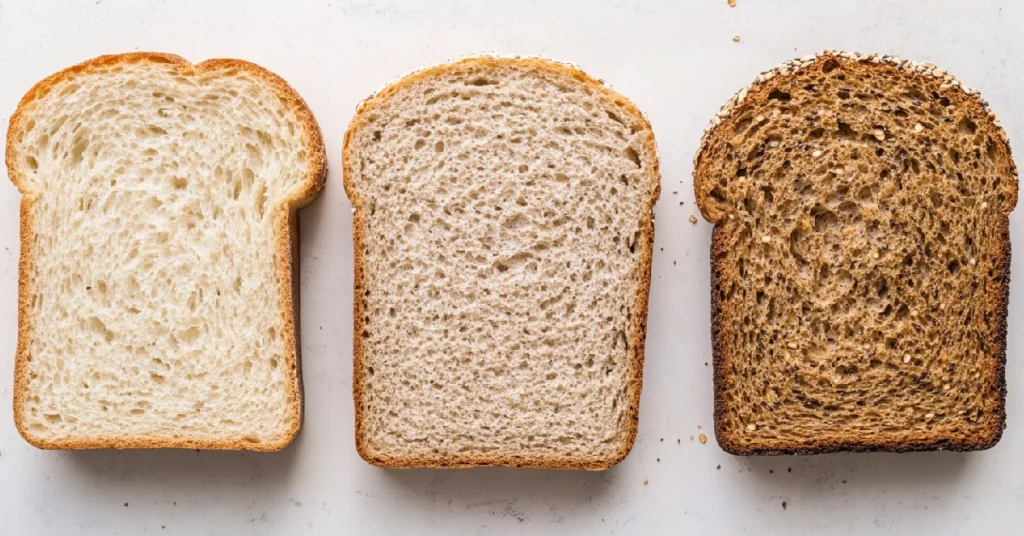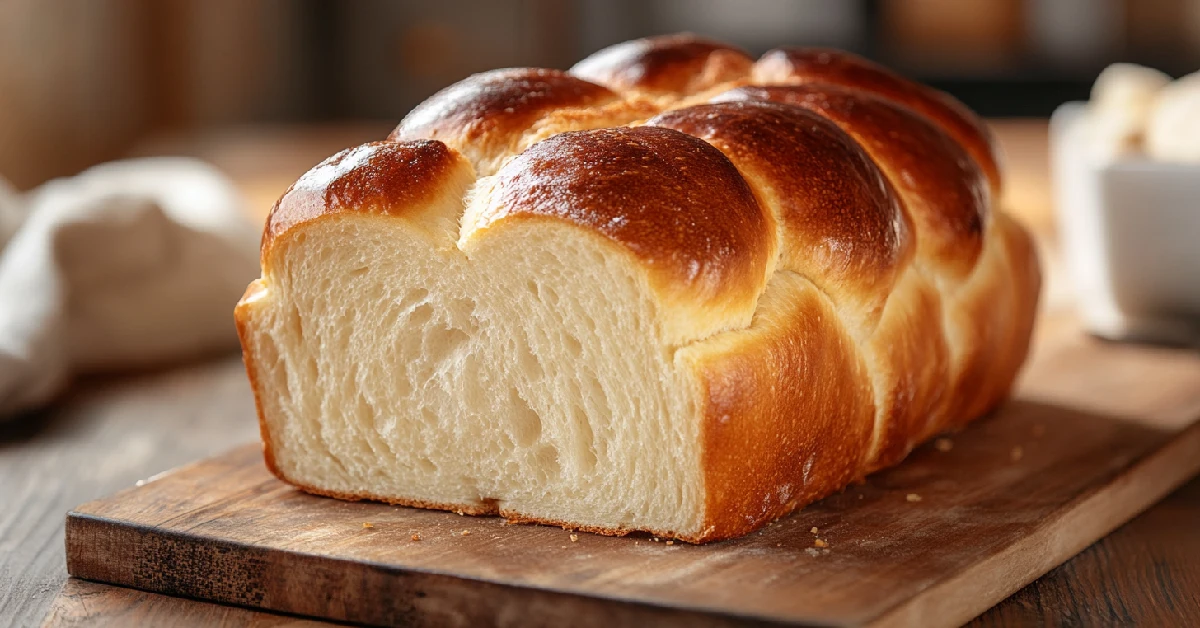Bread often gets a bad reputation when it comes to weight gain, but sourdough bread is different. Unlike regular white or whole wheat bread, sourdough is made through a natural fermentation process that changes its nutritional profile, making it easier to digest and less likely to contribute to fat storage.
So, what makes sourdough bread less fattening? The answer lies in its lower glycemic index, gut-friendly bacteria, and unique fermentation process. In this guide, we’ll break down why sourdough bread doesn’t cause the same weight gain effects as other breads and how it can actually support better digestion and metabolism.
Table of contents
- Understanding What Makes Sourdough Bread Different
- The Nutritional Profile of Sourdough Bread
- How Sourdough Bread Affects Digestion and Metabolism
- Does Sourdough Bread Help with Weight Management?
- Is Sourdough Bread Healthier Than Other Breads?
- How to Choose the Best Sourdough Bread
- Frequently Asked Questions
- Conclusion: Why Sourdough Bread Is Not Fattening
Understanding What Makes Sourdough Bread Different
What Is Sourdough Bread?
Sourdough bread is made using a traditional fermentation process that relies on wild yeast and lactic acid bacteria instead of commercial yeast. This process breaks down the starches in flour, making the bread easier to digest and giving it a slightly tangy flavor.
Unlike regular bread, which uses fast-acting yeast, sourdough is fermented over several hours or even days, which enhances its nutrient availability and makes it more gut-friendly.
How Sourdough Fermentation Affects Nutrition
The fermentation process of sourdough bread has several benefits that make it less likely to contribute to fat storage:
- Breaks Down Anti-Nutrients – Reduces phytic acid, which improves mineral absorption.
- Creates Probiotics & Prebiotics – Supports gut health, aiding in better digestion.
- Lowers Gluten Content – Some people with gluten sensitivity find sourdough easier to tolerate.
- Increases Resistant Starch – Slows digestion, keeping you fuller for longer.
These unique properties of sourdough bread make it nutritionally superior to regular bread, explaining why it doesn’t contribute to weight gain in the same way.
The Nutritional Profile of Sourdough Bread
Sourdough bread isn’t just easier to digest—it also has a better nutritional profile compared to regular bread. Its unique fermentation process lowers its glycemic index, increases nutrient availability, and improves gut health, making it a smarter choice for those watching their weight.

Lower Glycemic Index Compared to Regular Bread
One of the key reasons sourdough bread is less fattening is its lower glycemic index (GI). The glycemic index measures how quickly a food raises blood sugar levels. Foods with a high GI cause spikes in blood sugar, leading to insulin release and potential fat storage.
| Type of Bread | Glycemic Index (GI) |
|---|---|
| White Bread | 70-85 (High) |
| Whole Wheat Bread | 65-75 (Moderate) |
| Sourdough Bread | 50-55 (Low) |
Because sourdough has a lower GI, it leads to a slower rise in blood sugar, reducing cravings and preventing fat storage. This makes it a better option for weight management compared to traditional bread.
Macronutrient Breakdown
Sourdough bread contains a well-balanced mix of carbohydrates, protein, and fiber, which helps with satiety and digestion. Here’s how a typical slice of homemade or bakery-style sourdough compares nutritionally:
| Nutrient | Amount per Slice (60g) |
|---|---|
| Calories | 160-180 kcal |
| Carbohydrates | 30-35g |
| Fiber | 2-4g |
| Protein | 6-8g |
| Fat | 0.5-1g |
Although sourdough contains carbs, it is higher in protein and fiber, which contribute to feeling full longer and reducing overall calorie intake.
Additionally, sourdough’s fermentation process partially breaks down starches, increasing resistant starch, which helps regulate blood sugar and supports gut health.
Why These Nutrients Make Sourdough Less Fattening
- More Fiber & Protein → Increases satiety, reducing overeating.
- Lower Glycemic Index → Prevents blood sugar spikes and fat storage.
- Higher Resistant Starch → Slows digestion and supports metabolism.
These factors combined make sourdough bread a healthier, weight-friendly option compared to other types of bread.
How Sourdough Bread Affects Digestion and Metabolism
One of the biggest reasons sourdough bread is not fattening is its positive impact on digestion and metabolism. Unlike highly processed breads that can cause bloating and rapid blood sugar spikes, sourdough is gut-friendly, easier to digest, and supports better energy regulation.
Why It’s Easier to Digest
The fermentation process used to make sourdough breaks down complex carbohydrates and gluten, making it easier for your body to process. Here’s why:
- Prebiotics & Probiotics – The natural fermentation creates gut-friendly bacteria that aid digestion.
- Reduced Gluten Content – Fermentation partially breaks down gluten, making it easier to tolerate.
- Lower Phytic Acid – This anti-nutrient, which blocks mineral absorption, is significantly reduced in sourdough.
Because sourdough is easier on the digestive system, it’s less likely to cause bloating, inflammation, or sluggish digestion, which can contribute to weight gain.
The Role of Resistant Starch
Sourdough contains resistant starch, which acts differently than regular carbohydrates. Instead of being quickly broken down into glucose, resistant starch:
✔ Passes through the digestive system slowly, keeping you full longer.
✔ Feeds beneficial gut bacteria, improving gut health and digestion.
✔ Reduces fat storage, as it doesn’t cause major insulin spikes.
Compared to regular bread, sourdough provides longer-lasting energy and reduces the likelihood of excess calories being stored as fat.
How Fermentation Supports Metabolism
The unique fermentation process of sourdough also benefits metabolism by:
- Improving Insulin Sensitivity – Helps regulate blood sugar, preventing energy crashes and cravings.
- Enhancing Nutrient Absorption – Ensures better uptake of magnesium, zinc, and B vitamins, which support metabolism.
- Reducing Inflammation – Since sourdough is easier to digest, it’s less likely to cause bloating or gut-related weight gain.
Because good digestion is key to maintaining a healthy weight, sourdough naturally supports better metabolic function without the drawbacks of processed breads.
Does Sourdough Bread Help with Weight Management?
Sourdough bread isn’t just easier to digest—it may also support weight management by keeping you full longer, stabilizing blood sugar levels, and reducing fat storage. Unlike processed bread that leads to quick energy crashes, sourdough provides sustained energy without the risk of overeating.

Why It Keeps You Fuller Longer
One of the biggest challenges when trying to maintain or lose weight is hunger control. Sourdough bread naturally helps with appetite regulation due to its:
- Higher Protein & Fiber Content – Slows digestion, leading to longer-lasting fullness.
- Increased Resistant Starch – Takes longer to break down, preventing rapid hunger spikes.
- Fermentation Process – Improves gut health, which plays a role in satiety and metabolism.
Compared to regular bread, sourdough helps you feel satisfied with fewer calories, reducing the likelihood of snacking or overeating later.
Blood Sugar Control and Fat Storage
Spikes in blood sugar (glucose) trigger the body to release insulin, which signals the body to store excess energy as fat. Since sourdough has a lower glycemic index (GI) than white or whole wheat bread, it causes a gradual release of glucose instead of a rapid spike.
- Lower GI = More Stable Blood Sugar – Helps prevent cravings and energy crashes.
- Less Insulin Spikes = Less Fat Storage – Reduces the body’s tendency to store fat.
This means that eating sourdough instead of regular bread may reduce fat accumulation over time, making it a better choice for those watching their weight.
Can Sourdough Bread Be Part of a Weight Loss Diet?
Yes! While portion control still matters, sourdough is a smarter choice than highly processed bread if you’re trying to lose weight.
- Eat in Moderation – Stick to 1-2 slices per meal, paired with protein and healthy fats.
- Choose Whole Grain Sourdough – Higher fiber content keeps you full longer.
- Pair with Protein – Helps stabilize blood sugar even further.
By replacing processed bread with sourdough, you can enjoy better digestion, improved energy, and fewer cravings, all of which support weight management.
Is Sourdough Bread Healthier Than Other Breads?
When it comes to health benefits, sourdough bread stands out from other types of bread due to its fermentation process, lower glycemic index, and improved digestibility. But how does it compare to other popular bread options? Let’s take a closer look.
Comparing Sourdough to White, Whole Wheat, and Keto Breads
| Bread Type | Glycemic Index (GI) | Digestibility | Gut Health Benefits | Weight Management |
|---|---|---|---|---|
| White Bread | High (70-85) | Harder to digest, contains anti-nutrients | None | Can cause cravings & weight gain |
| Whole Wheat Bread | Moderate (65-75) | Better than white, but still contains gluten & phytic acid | Some fiber, but no probiotics | Moderately filling, but may cause blood sugar spikes |
| Sourdough Bread | Low (50-55) | Easier to digest due to fermentation | Contains prebiotics & beneficial bacteria | More filling, supports stable blood sugar |
| Keto Bread | Very Low (0-20) | Depends on ingredients, can contain artificial additives | No gut health benefits | May be useful for low-carb diets but lacks natural fiber & nutrients |
Why Sourdough Is a Better Choice:
✔ More digestible than white or whole wheat bread due to fermentation.
✔ Promotes gut health with prebiotics and probiotics.
✔ Lower glycemic index means less fat storage and better blood sugar control.
✔ More natural and nutrient-dense compared to many keto breads with artificial ingredients.
Does Sourdough Fit in a Low-Carb or Gluten-Free Diet?
- Not Ideal for Strict Low-Carb Diets – Sourdough still contains carbohydrates, so it’s not keto-friendly. However, it’s a better choice for low-glycemic diets.
- Better Tolerated by Gluten-Sensitive Individuals – Fermentation breaks down gluten, making sourdough easier to digest. However, it’s not completely gluten-free.
- Whole-Grain Sourdough Is Best for Weight Management – More fiber and protein help keep you full longer.
Sourdough is an excellent alternative to regular bread, but those with strict dietary restrictions should still check ingredients and portion sizes.
How to Choose the Best Sourdough Bread
Not all sourdough breads are created equal. While traditional sourdough is made using a natural fermentation process, many store-bought versions contain commercial yeast, preservatives, and even added sugar, which can reduce its health benefits. To get the most out of sourdough, it’s important to choose the right type.

Store-Bought vs. Homemade: Which Is Better?
| Type of Sourdough | Pros | Cons |
|---|---|---|
| Homemade Sourdough | No additives, real fermentation, better gut health benefits | Requires time, effort, and a sourdough starter |
| Bakery-Fresh Sourdough | Usually made with simple ingredients, better quality than mass-produced brands | Can be expensive, availability varies |
| Grocery Store Sourdough | Convenient and affordable | Often contains added yeast, preservatives, and sugar, reducing its benefits |
If possible, homemade or bakery-fresh sourdough is the best choice, as it undergoes true fermentation and contains minimal ingredients.
If you’re looking for a delicious way to use sourdough bread, try this Sourdough Bread Pudding Recipe for a gut-friendly dessert that complements the benefits of real sourdough.
Ingredients to Look For and Avoid
When buying sourdough, check the ingredient list carefully. The best sourdough breads contain only three main ingredients:
✅ Flour (whole wheat, rye, or unbleached white)
✅ Water
✅ Salt
However, some brands add unnecessary fillers that can reduce the benefits of sourdough.
🚫 Avoid sourdough with these ingredients:
- Commercial Yeast – This means the bread was not naturally fermented.
- Added Sugar – Increases blood sugar spikes and reduces the low-GI benefits.
- Preservatives & Additives – Chemical stabilizers can disrupt gut health.
Look for labels that say “naturally fermented” or “long fermentation process” to ensure you’re getting authentic sourdough.
How to Spot Fake Sourdough
Many store-bought “sourdough” breads are not actually fermented. Here’s how to tell the difference:
| Feature | Real Sourdough | Fake Sourdough |
|---|---|---|
| Texture | Dense, chewy, with a slightly tangy flavor | Soft, fluffy, similar to white bread |
| Ingredients | Flour, water, salt, natural starter | Yeast, sugar, preservatives |
| Fermentation | Long, natural process (12-48 hours) | Quick rise with commercial yeast |
If the ingredient list contains yeast, sugar, or artificial additives, it’s likely not true sourdough.
Best Types of Sourdough for Weight Management
For those watching their weight, the best sourdough options include:
- Whole Wheat Sourdough – Higher fiber, keeps you full longer.
- Rye Sourdough – Lower glycemic index, rich in nutrients.
- Long-Fermented Sourdough – Less gluten, better digestion.
By choosing real, naturally fermented sourdough, you’ll get the full health benefits without the drawbacks of processed bread.
Frequently Asked Questions
Sourdough bread typically has a similar calorie count to regular white or whole wheat bread, but what makes it less fattening is its impact on digestion and metabolism. Because it:
Has a lower glycemic index, reducing fat storage.
Contains more fiber and protein, increasing satiety.
Improves gut health, which can support weight management.
Even though the calorie count is similar, sourdough is more filling and helps regulate blood sugar, making it less likely to contribute to weight gain.
Yes, sourdough is a better choice than most other breads for weight loss because it:
✔ Keeps you full longer due to higher fiber and resistant starch.
✔ Prevents blood sugar spikes, reducing cravings and fat storage.
✔ Supports gut health, which can improve metabolism and digestion.
If you’re trying to lose weight, opt for whole wheat or rye sourdough and pair it with protein and healthy fats for a balanced meal.
Sourdough is not keto-friendly, but it is a better choice than regular bread for those following a moderate or low-glycemic diet. If you’re on a low-carb plan but not strict keto, you can enjoy sourdough in small portions.
For a lower-carb option, look for whole grain or rye sourdough, which contains more fiber and fewer net carbs.
Sourdough is more satisfying than regular bread because it contains:
More fiber – Slows digestion and reduces hunger.
More protein – Helps with satiety and muscle maintenance.
Resistant starch – Takes longer to digest, leading to steady energy release.
Since it keeps you full longer, sourdough can help naturally reduce calorie intake, making it easier to manage weight.
Conclusion: Why Sourdough Bread Is Not Fattening
Sourdough bread is a nutrient-dense, gut-friendly alternative to processed bread. While it still contains carbohydrates, its fermentation process, lower glycemic index, and improved digestibility make it a better choice for weight management.
By choosing real, long-fermented sourdough made from whole grains, you can enjoy bread without the weight gain concerns that come with processed options.
So, next time you’re craving bread, opt for sourdough and enjoy the benefits of better digestion, stable energy, and lasting fullness!



